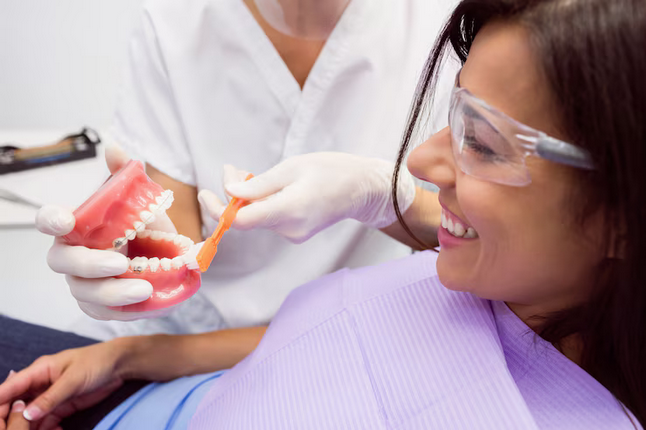Periodontitis, a chronic inflammatory condition affecting the gums and supporting structures of the teeth, is a prevalent oral health issue affecting millions worldwide. Historically, managing periodontitis has been challenging, often relying on traditional treatment methods that can be time-consuming, invasive, and only sometimes effective in the long run. However, in recent years, periodontal care has witnessed a remarkable surge of technological and scientific advancements, paving the way for more effective and patient-friendly approaches to treating this debilitating condition.
Understanding Periodontitis
Periodontitis is a progressive disease that, if left untreated, can lead to the destruction of the gum tissue and underlying bone and eventual tooth loss. The primary cause of periodontitis is the accumulation of harmful bacteria in the gum pockets, which can trigger an inflammatory response from the body. This inflammatory response, if sustained, can ultimately result in the deterioration of the periodontal structures.
Periodontitis symptoms can include red, swollen, and bleeding gums, persistent bad breath, tooth sensitivity, and the appearance of gaps between teeth. If not addressed promptly, periodontitis can have far-reaching implications for an individual's overall health, as inflammation and infection can potentially contribute to the development of systemic conditions such as heart disease, stroke, and diabetes.
Advancements in Periodontitis Treatment
In recent years, periodontal care has witnessed several groundbreaking advancements, offering patients more effective and innovative treatment options. Here are some of the latest developments in periodontitis treatment:
- Minimally Invasive Techniques: Traditional periodontal surgery, often cutting and suturing the gum tissue, has given way to more conservative, minimally invasive approaches. Techniques like Minimally Invasive Surgical Therapy (MIST) and Minimally Invasive Non-Surgical Therapy (MINST) utilize smaller incisions, leading to faster healing times, reduced discomfort, and improved patient satisfaction.
- Laser-Assisted Treatments: The use of specialised dental lasers has revolutionised the way periodontists approach treatment. Laser-based therapies, such as Laser-Assisted New Attachment Procedure (LANAP) and Laser-Assisted Peri-Implantitis Treatment (LAPT), can selectively target and remove diseased gum tissue while preserving healthy structures, reducing the need for traditional surgical interventions.
- Regenerative Procedures: Advancements in regenerative dentistry have enabled periodontists to reverse the effects of periodontitis by stimulating the regrowth of lost gum and bone tissues. Procedures like Guided Tissue Regeneration (GTR) and Enamel Matrix Derivative (EMD) therapy utilise specialised membranes, grafting materials, and biological agents to facilitate the natural healing and reconstruction of the periodontal structures.
- Antimicrobial Therapies: Recognizing the crucial role of harmful bacteria in the development and progression of periodontitis, researchers have developed innovative antimicrobial treatments. Local Delivered Antimicrobials (LDA) and Photodynamic Therapy (PDT) can effectively target and eliminate the specific bacteria responsible for the disease, complementing traditional scaling and root planing procedures.
- Personalised, Evidence-Based Approaches: Periodontal care is increasingly moving towards personalised, evidence-based treatment strategies. By leveraging advanced diagnostic tools, such as genetic testing and advanced imaging techniques, periodontists can now develop customised treatment plans that address each individual patient's unique needs and risk factors.
- Improved Patient Comfort and Compliance: Recognizing the importance of patient comfort and compliance in the success of periodontal treatment, practitioners have emphasised techniques and technologies that enhance the overall patient experience. This includes the use of painless anaesthesia administration, improved pain management protocols, and the incorporation of sedation dentistry options for patients with dental anxiety.
The Importance of Seeking Prompt Periodontal Care
Given the progressive and potentially devastating nature of periodontitis, individuals must seek prompt and appropriate periodontal care. Early intervention can help prevent the condition from worsening, preserving the integrity of the gums, teeth, and underlying bone structures.
Regular visits to a qualified periodontist who can perform comprehensive assessments and develop a tailored treatment plan can significantly improve the chances of successfully managing and even reversing the effects of periodontitis. By taking a proactive approach to oral health, individuals can maintain a healthy, attractive smile and safeguard their overall well-being.
Conclusion
The field of periodontal care has witnessed remarkable advancements in recent years, offering patients more effective, minimally invasive, and patient-friendly treatment options for managing periodontitis. From cutting-edge laser-based therapies and regenerative procedures to personalised, evidence-based approaches, these innovations have transformed how periodontists address this chronic and debilitating oral health condition.
By staying informed about the latest developments in periodontitis treatment and seeking the care of a qualified periodontist, individuals can take control of their oral health and ensure the long-term health and preservation of their teeth and gums. With these advancements, patients can look forward to more comfortable, effective, and successful periodontal care, ultimately improving their quality of life and overall well-being.





Comments